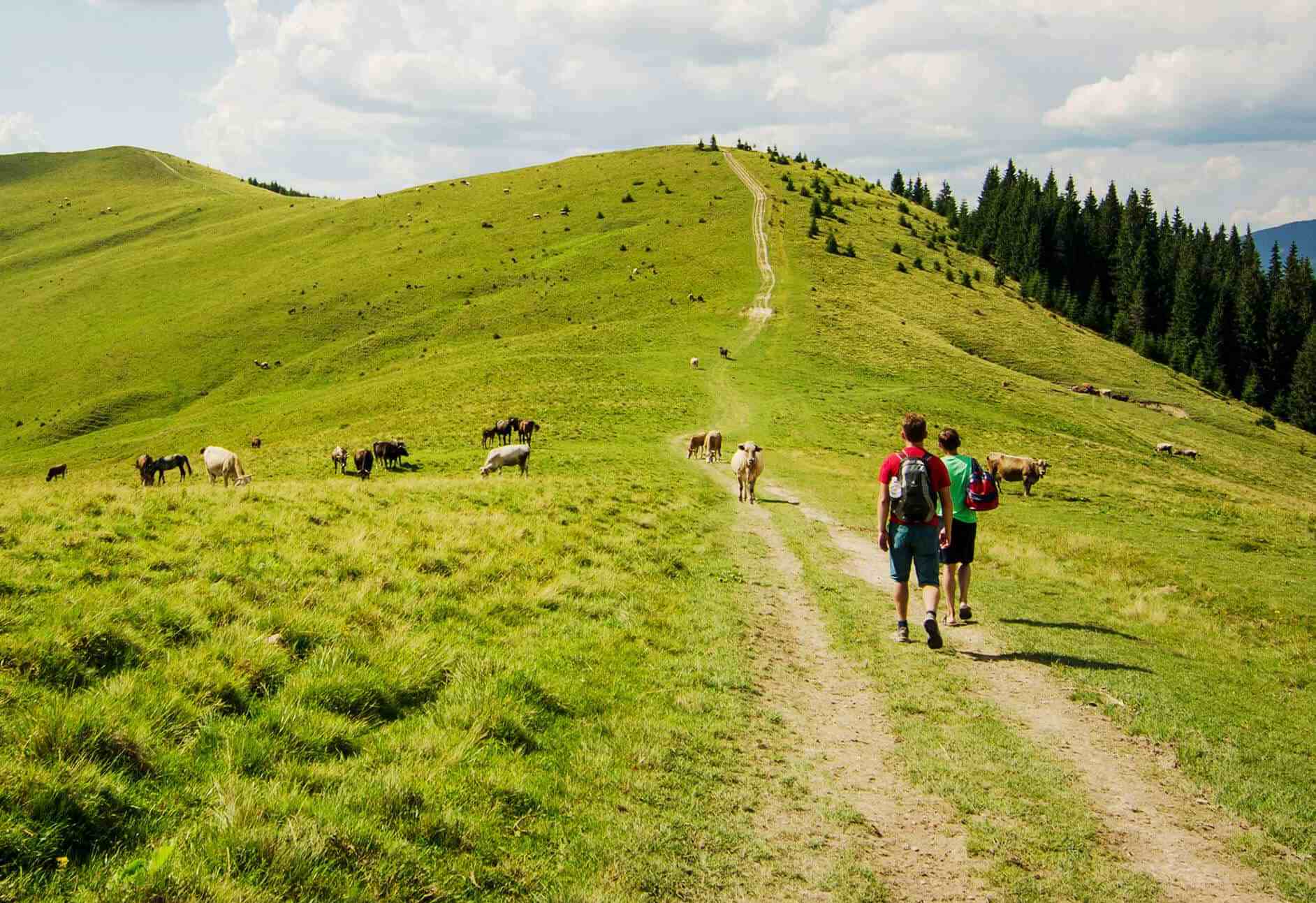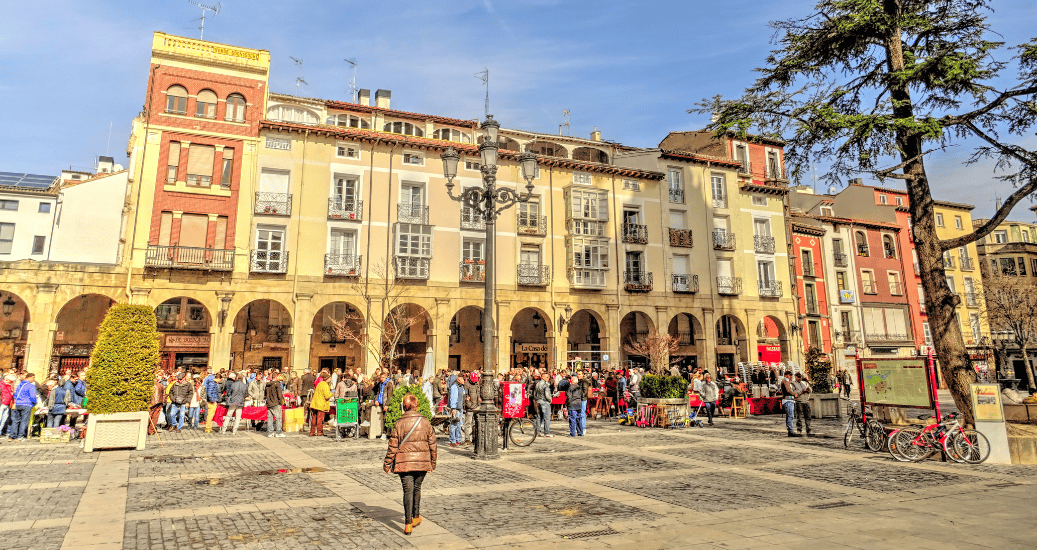Fatima in Portugal is a small city of 13,000 people in the centre of the country. But Fatima’s unexceptional history as a diversion from the Camino Portugues pilgrimage route doesn’t tell the full story of its significance in the Catholic faith. In 1917, a miracle in Fatima shifted Portugal to the heart of the Christianity for years to come and put the city of Fatima on the map. This is the incredible story of the ‘Miracle of the Sun’ and how it transformed a place.
The History of Miracles in Fatima, Portugal
There are actually a number of heavenly sightings connected to the story of Our Lady of Fatima in Portugal’s history. The first apparition of Fatima occurred in the mid-18th Century. A mute shepherdess claimed to witness the Virgin Mary, who asked the girl for one of her sheep. This caused the girl to speak and created a frenzy of religious activity around the country that supposedly led to the building of the Sanctuary of Our Lady of Fatima, now one of Portugal’s most important religious sites. Less than 50 years after its construction, Pope Pius VII began to grant indulgences for all pilgrims visiting the Our Lady of Fatima shrine.
The Miracle of the Sun
Around 150 years after the Fatima Church in Portugal was built, a similar event took place which launched the city back into the centre of people’s consciousness. On 13 May 1917, three children were guarding their families’ sheep in the Cova da Iria part of Fatima city. There, the children claimed to see a ghostly vision of a shining lady dressed in white. This wasn’t the first time that the children claimed to see the apparition of the lady, later believed by the Church to be the Virgin Mary, and they would see her a further 5 times. The children also prophesied the vision would return on 13 October, 1917, to perform miracles.
In response to this claim, undertook what would later become popularised as the Fatima pilgrimage to the city to witness these miracles. With more than 70,000 people gathered, newspapers across Portugal published testimonies from numerous witnesses who claimed they had seen extraordinary solar activity. These claims varied from the Sun zig-zagging in the sky, advancing rapidly towards the Earth, or emitting multi-coloured light beams. This event was called the Miracle of the Sun.
A small chapel was built at the exact site of the apparition two years later, and a statue of the Virgin Mary installed. Both were subsequently enclosed within the Fatima Basicilia, one of Portugal’s most beautiful churches.
Needing to legitimise these claims, the local bishop opened a canonical investigation. Bishop José da Silva reviewed testimonies of similar extraordinary solar events from secular sceptics such as reporters and government officials. On 13 October 1930 he declared the Miracle of the Sun ‘worthy of belief’. This led to the official crowning of the Our Lady of Fatima statue in Portugal. It also led to the establishment of 13 May each year as the Feast of Our Lady of Fatima, a key date in Portugal.
The Route to Fatima, Portugal’s Holiest Pilgrimage
Although people went on pilgrimage from all over Europe to Fatima in Portugal, the official Caminho de Fatima pilgrimage starts in the city of Lisbon. The route runs for 142km, following the Portuguese Way as far as Santarem before diverting to Amiais de Baixo. The trail then goes on to Fatima and finishes at the Sanctuary of Fatima complex.
The section of the Caminho de Fatima that follows the Portuguese Way is well waymarked and maintained, due to its popularity with pilgrims headed for the city of Santiago de Compostela. It is also a relatively flat part of the trail. Once you divert off the Camino Portugues, the paths become more basic and the landscape hillier. This gives pilgrims time for intense self-reflection as they make their way to Fatima over the final 53km.

If you don’t have the time or don’t want to walk, given how far Fatima is from Lisbon, you can take a trip to Fatima across Portugal easily. There is no train from Lisbon to Fatima, but there are several bus routes running from the city centre that only take around 1 hour and 20 minutes. Else, you can join guided Fatima tours from Lisbon and take in more of the city with expert commentary and peace of mind that the transport side of your journey is handled.
What to Do in Fatima
Given the city’s history as a religious site, most of the things to do in Fatima are connected to the sightings of the Lady of Fatima. The Sanctuary of Our Lady of Fátima is a large complex containing a number of the monuments mentioned throughout the article, including the Chapel of the Apparitions, the Our Lady of Fatima statue, and the Basilica. The Stations of the Cross of Valinhos, at the edge of Fatima, are also key places of worship. Outside of the Catholic sites, the city’s Byzantine Chapel of the Holy Dormition is also interesting.
Outside of religious sites, what to see in Fatima is often connected to the city’s agricultural history. There are a number of old mills, including the Mills of Fazarga, Giesteira, and Ortiga. The Olive Oil Museum shares information on the regional methods of olive oil making. The Fatima Wax Museum also gives tourists an amusing look at key events in the city’s past.
For people who want to stay the night in this holy city and explore it in a little more depth, there are a number of lovely hotels in Fatima, Portugal. There are options at numerous price points to cater to a range of pilgrims and tourists, but we recommended the Hotel Fatima.
Now that you’ve learned about the ‘Miracle of the Sun’ and the rich religious history of this unassuming city, are you keen to explore Fatima, Portugal’s holiest place, for yourself?
Follow the Camino’s team of pilgrimage planners can arrange a walking holiday to the city, including accommodation each night, or even a day tour from Lisbon that will give you the full insight into what makes Fatima so special.







